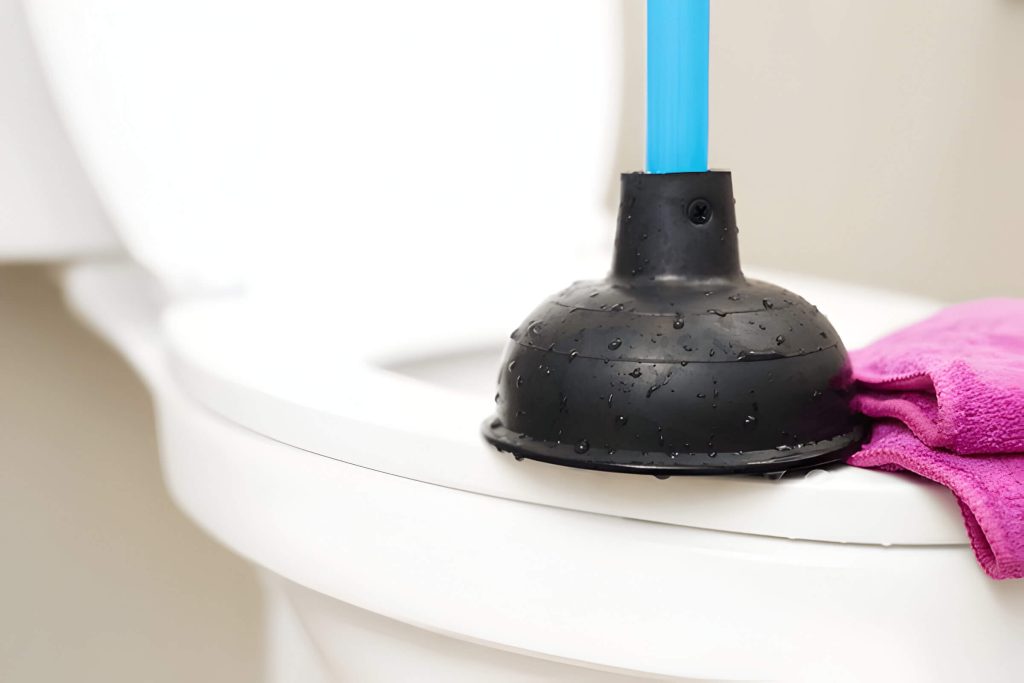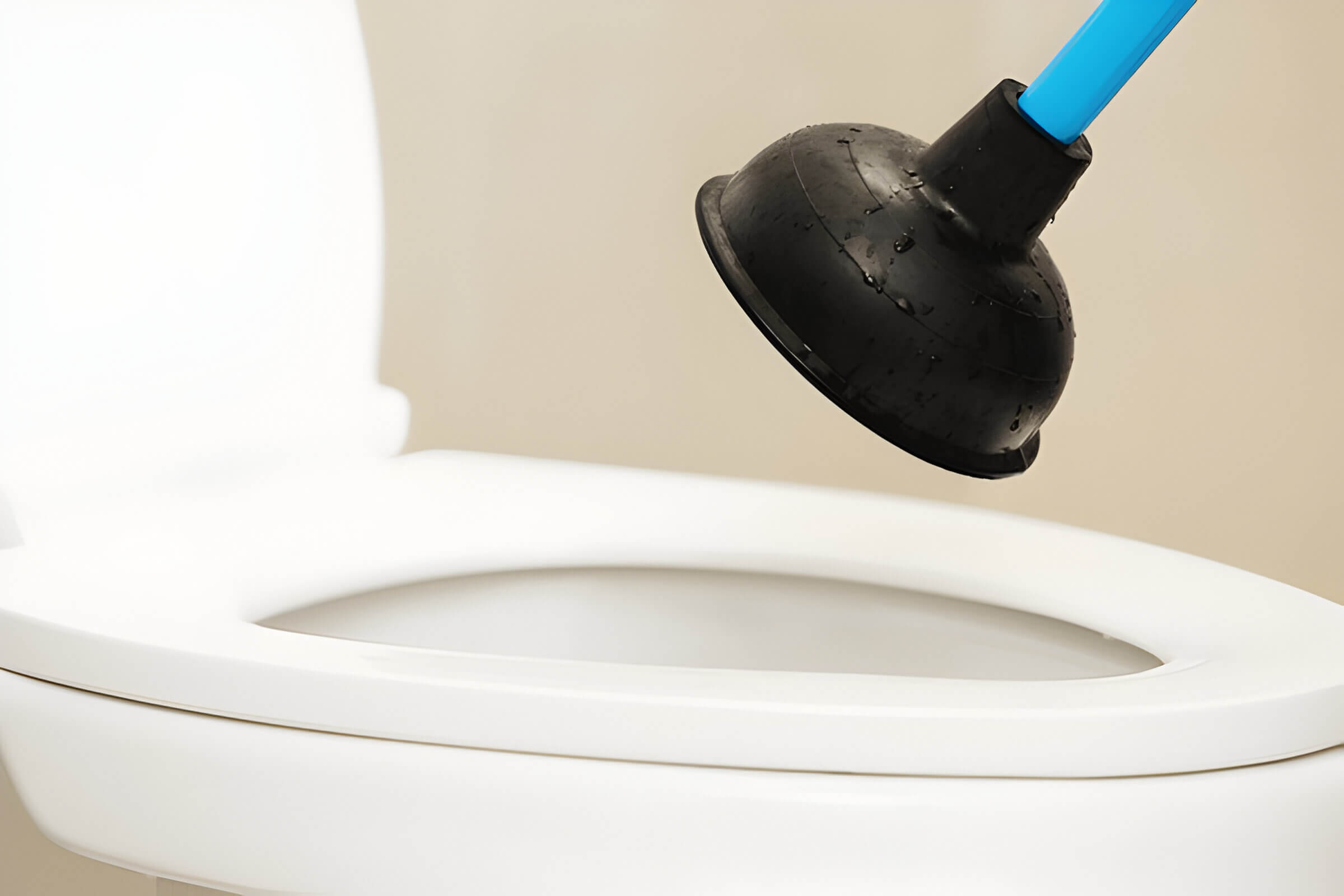Understanding the importance of unclogging a toilet is essential for every homeowner. A clogged toilet is not just an inconvenience; it can lead to more severe plumbing issues if not addressed promptly. Knowing how to tackle common toilet problems can save you time, money, and the hassle of calling a plumber for minor issues.
One of the most frequent plumbing basics that every homeowner should familiarize themselves with is the process of unclogging a toilet. This skill is crucial because toilets can become clogged for various reasons, such as excessive toilet paper use or flushing non-flushable items. By learning how to handle these situations, you ensure that your household runs smoothly and avoid potential water damage from overflowing toilets.
Moreover, understanding these plumbing basics empowers homeowners to maintain their homes better. It allows them to identify when a problem requires professional intervention versus when it’s something they can handle on their own. In essence, knowing how to unclog a toilet equips homeowners with valuable knowledge that enhances their ability to manage and maintain their living spaces efficiently.
This guide covers plumbing basics, common clog causes, and necessary tools. Whether it’s a minor blockage or a stubborn clog, our step-by-step methods will restore your toilet’s functionality quickly and safely. Read on to master this common home maintenance task.
Identify the Cause of the Clog
Understanding what clogs toilets is essential for effectively addressing the issue. Toilet clogs can be caused by a variety of factors, and recognizing these common culprits can help in taking the right steps to resolve them.
One of the primary toilet clog causes is excessive toilet paper usage. While toilet paper is designed to dissolve in water, using too much at once can create blockages. Another frequent cause is flushing non-flushable items such as sanitary products, baby wipes, cotton balls, or even dental floss. These items do not break down easily and can obstruct the flow through pipes.
Initial checks for a clogged toilet should start with assessing what was recently flushed. If you suspect that an object other than waste or toilet paper has been flushed, it’s likely the source of your problem. Additionally, inspect whether multiple fixtures are draining slowly; this could indicate a more significant blockage in your main sewer line rather than just an isolated issue with your toilet.
By identifying these common clogging items and performing initial checks promptly, you can often prevent minor issues from escalating into more severe plumbing problems.
The Essential Tools You Need to Unclog a Toilet

When faced with a clogged toilet, having the right tools on hand can make all the difference. Here’s a comprehensive list of essential plumbing tools that can help you tackle this common household issue effectively.
First and foremost, a reliable toilet plunger is indispensable. There are several types to consider, including the standard cup plunger and the flange plunger, which is specifically designed for toilets. The flange provides an extra seal to create more suction power, making it more effective at dislodging tough clogs.
Next on your plumbing tools list should be a plumbing snake or drain auger. This tool is particularly useful for breaking up and removing obstructions that are too stubborn for a plunger alone. A closet auger is another specialized type of snake designed specifically for toilets; its flexible cable can navigate through the bends in your toilet’s trap without causing damage.
Chemical drain cleaners are also an option but should be used with caution. While they can dissolve organic material blocking your pipes, they may also cause damage if overused or used improperly. Always follow the manufacturer’s instructions carefully when using these products.
By equipping yourself with these essential tools, you’ll be well-prepared to handle most toilet clogs efficiently and safely.
Step-by-Step Methods to Unclog Your Toilet Quickly and Safely
Unclogging a toilet can be a daunting task, but with the right methods, it can be done quickly and safely. Here’s a step-by-step guide to help you tackle this common household issue.
1. How to Use a Plunger Correctly
The plunger is often the first tool to reach for when dealing with a clogged toilet. To use it effectively, ensure you have the right type of plunger. A flange plunger is best suited for toilets. Place the rubber cup of the plunger into the toilet bowl, ensuring it covers the drain hole completely. Push down gently at first to get rid of any air trapped inside, then pump vigorously up and down while maintaining the seal. After several pumps, pull up sharply to break the seal and see if water starts draining. Repeat as necessary.
2. Unclogging with a Plumbing Snake
If plunging doesn’t do the trick, a plumbing snake (or auger) might be your next best option. Insert the end of the snake into the toilet drain and begin turning its handle clockwise to extend it through the pipe bends and obstructions. Continue turning until you feel resistance; this indicates that you’ve reached an obstruction. Push gently while rotating until you feel less resistance; this means you’ve broken through or hooked onto whatever is causing the clog. Slowly retract and remove debris before flushing to check if normal flow has been restored.
3. Using Chemical Drain Cleaners Safely
As a last resort, chemical drain cleaners can be effective but should be used cautiously due to their caustic nature which can damage pipes over time or cause harm if mishandled. Always read and follow manufacturer instructions carefully, typically, you’ll pour an appropriate amount into your toilet bowl and let it sit for 15-30 minutes before flushing with hot water (if recommended). Ensure good ventilation in your bathroom during this process.
By following these steps on how to use a plunger correctly, unclogging with a plumbing snake, or using chemical drain cleaners safely, you can efficiently address most toilet clogs without professional help.
What to Do If the Clog Won’t Budge
Encountering a stubborn clog can be frustrating, but there are several advanced unclogging techniques you can try before calling in professional help. Persistent clogs often require more than just basic plunging or over-the-counter solutions. Here’s what you can do:
1. Use a Plumbing Snake: A plumbing snake, or auger, is a flexible tool designed to navigate through pipes and break up blockages. Insert the snake into the drain and turn the handle to push it deeper until you feel resistance. Continue rotating the handle to dislodge the clog.
2. Try a Wet/Dry Vacuum: For more severe clogs, a wet/dry vacuum might be effective. Set it to liquid mode, create a tight seal over the drain with its hose, and let it suck out the blockage.
3. Chemical Drain Cleaners: Use chemical drain cleaners as a last resort due to their harshness on pipes and potential environmental impact. Follow manufacturer instructions carefully to avoid damage.
4. Hydro Jetting: This method involves using high-pressure water jets to clear out debris from your pipes. While highly effective for persistent clogs, hydro jetting typically requires specialized equipment handled by professionals.
If these methods fail or if you’re uncomfortable attempting them yourself, it’s time to consider when to call a plumber. Persistent clogs can sometimes indicate underlying issues such as pipe damage or deeper blockages that need expert attention.
How to Avoid Future Clogs in Your Toilet
Maintaining a clog-free toilet is essential for a smoothly functioning household. By following some simple toilet maintenance tips, you can prevent future clogs and avoid the inconvenience and expense of dealing with blockages.
First and foremost, understanding what items are flushable and non-flushable is crucial. Only human waste and toilet paper should be flushed down the toilet. Non-flushable items such as wet wipes, feminine hygiene products, cotton balls, dental floss, diapers, and paper towels should be disposed of in a trash bin. These items do not break down easily and can cause significant blockages in your plumbing system.
Another important tip is to use an appropriate amount of toilet paper. Excessive use of toilet paper can lead to clogs even though it is designed to be flushable. Opt for high-quality, septic-safe toilet paper that dissolves more easily in water.
Regularly checking for early signs of potential clogs can also help you avoid bigger issues down the line. If you notice that your toilet is flushing slower than usual or making gurgling sounds, it might be time to inspect your plumbing system or call a professional plumber for assistance.
Additionally, consider implementing routine maintenance practices such as using enzyme-based cleaners that help break down waste materials more effectively without harming your pipes or septic system.
By following these preventive measures and being mindful about what goes into your toilet, you can significantly reduce the risk of future clogs and ensure a hassle-free bathroom experience.






